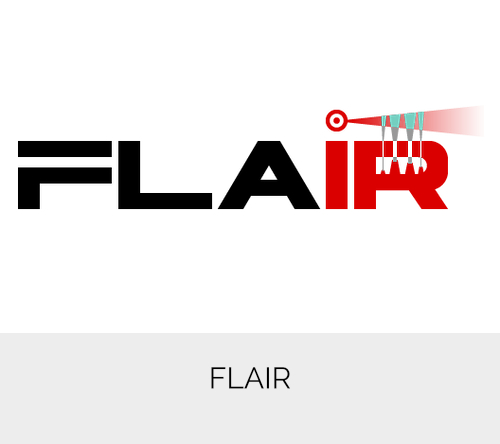FLAIR – FLying ultrA-broadband single-shot Infra-Red sensor (2016)
CALL IDENTIFIER: H2020-ICT-2016-1
GRANT AGREEMENT: No 732968
PROJECT DURATION: 36 months
A high-performance air sampling sensor based on cutting-edge photonic technology is mounted on an UAV (drone) for pervasive and large area coverage high-specificity and high-sensitivity (ppbv) air quality sensing.
Operating in the two atmospheric windows of 2-5 μm and 8-12 μm wavelength, FLAIR can detect minute traces of molecules in complex gas mixtures from their characteristic IR absorption fingerprints and provide real time information to the operator.
FLAIR can operate in remote or dangerous areas and outside of established monitoring networks.
FLAIR contributes to a safer environment by providing detailed air quality data e.g. around industrial infrastructure, highways and ships or in case of catastrophic events like wildfires, volcanic eruption or chemical accidents.
The UAV represented in this figure is a modified version of the AR3 NET RAY model4 (from the consortium partner TEKEVER) which is will be used in FLAIR.
The innovative nature of the approach proposed in FLAIR comes from the novel design of an advanced optical spectroscopy device based on the integration of sub-systems establishing a new state-of-the-art in their respective fields.
The challenges related to the development of such an integrated device will be answered by bringing together a strong and interdisciplinary consortium.
The FLAIR consortium involves partners from 6 European countries (Denmark, Netherlands, Portugal, Spain, Sweden and Switzerland) fulfilling the minimum requirement of involving three different countries in an H2020 collaborative project.
Project FLAIR is an initiative of the Photonics Public Private Partnership co-funded by the European Union’s Horizon 2020 research and innovation programme under grant agreement No 732968






